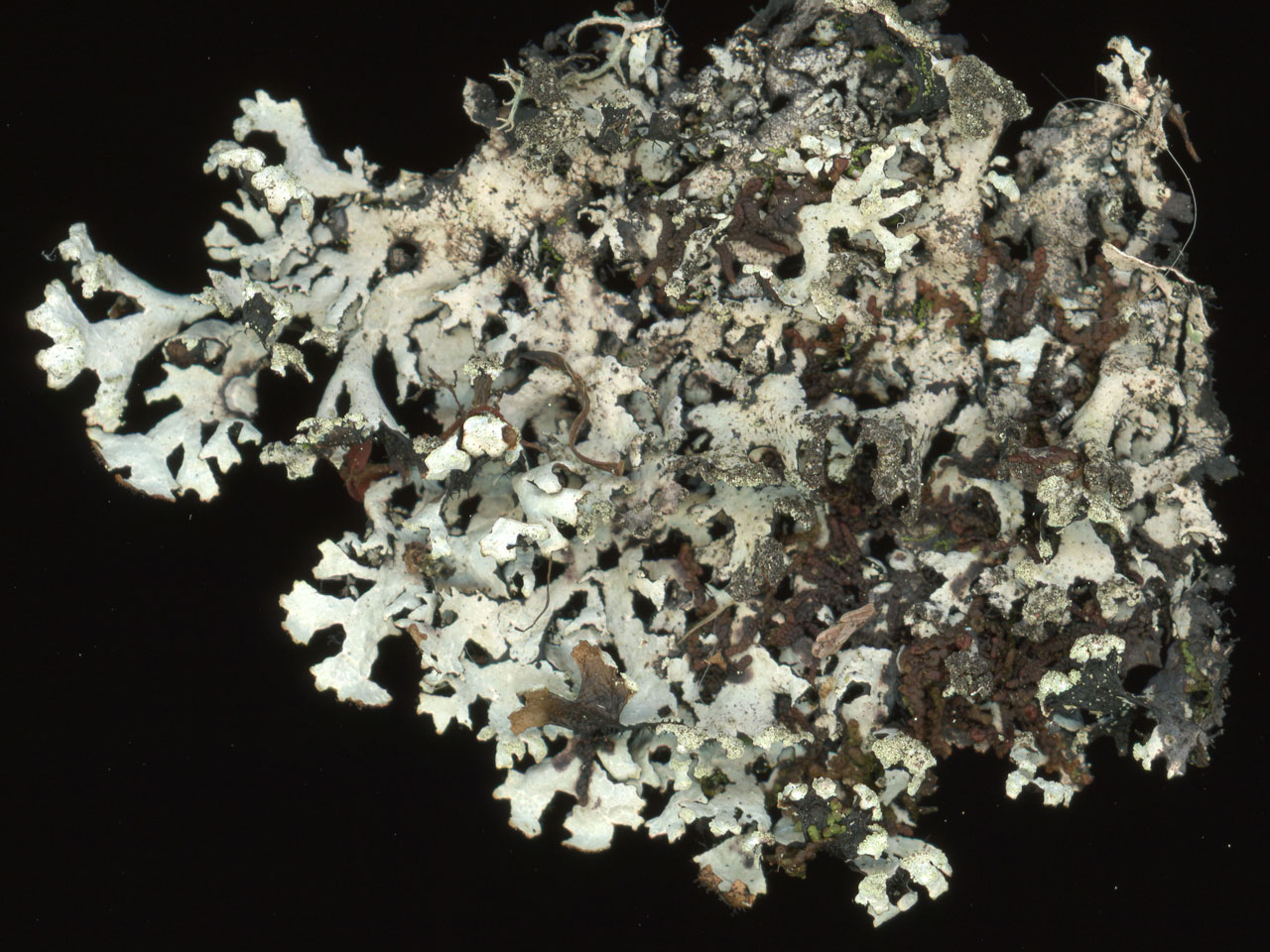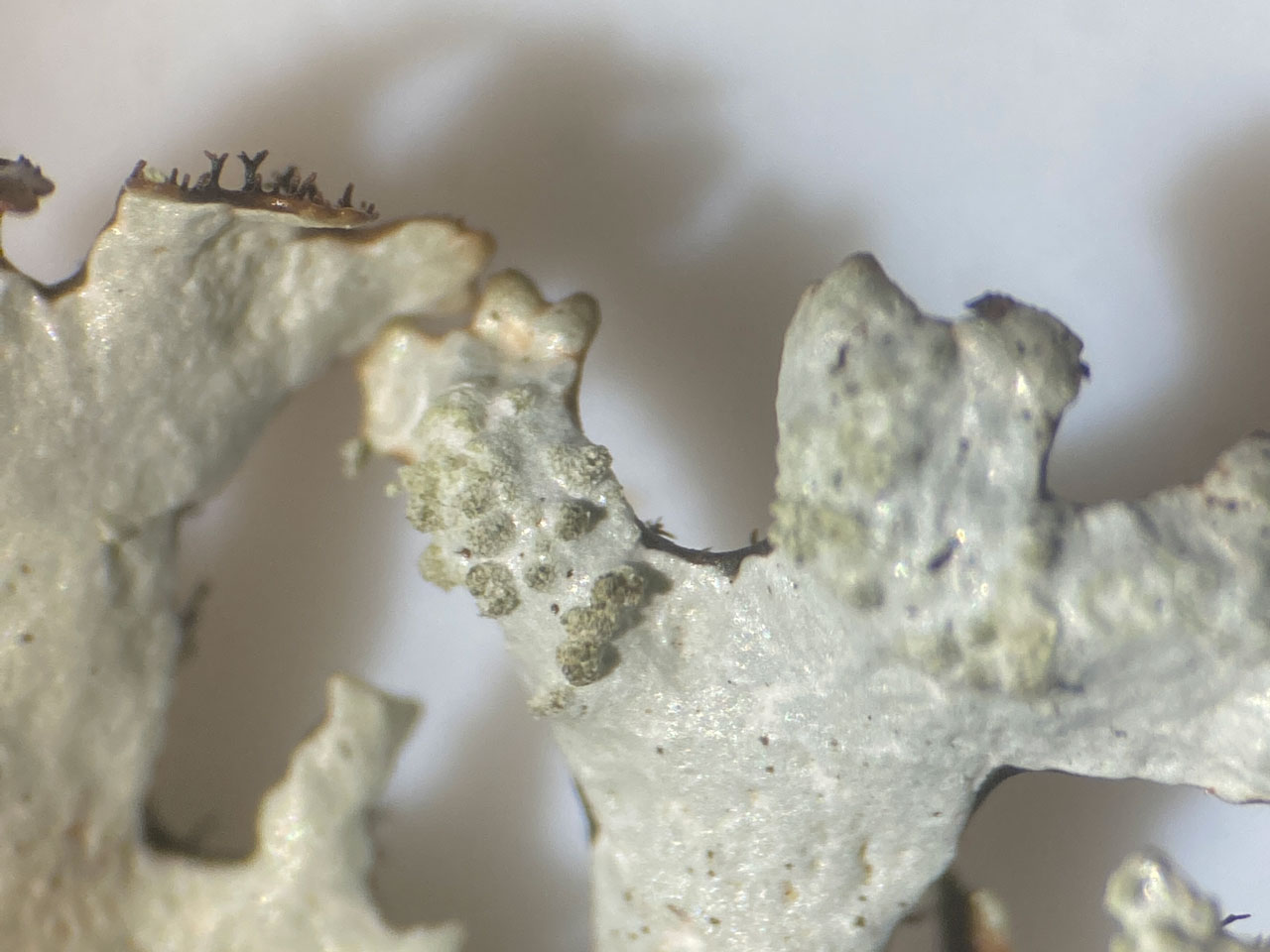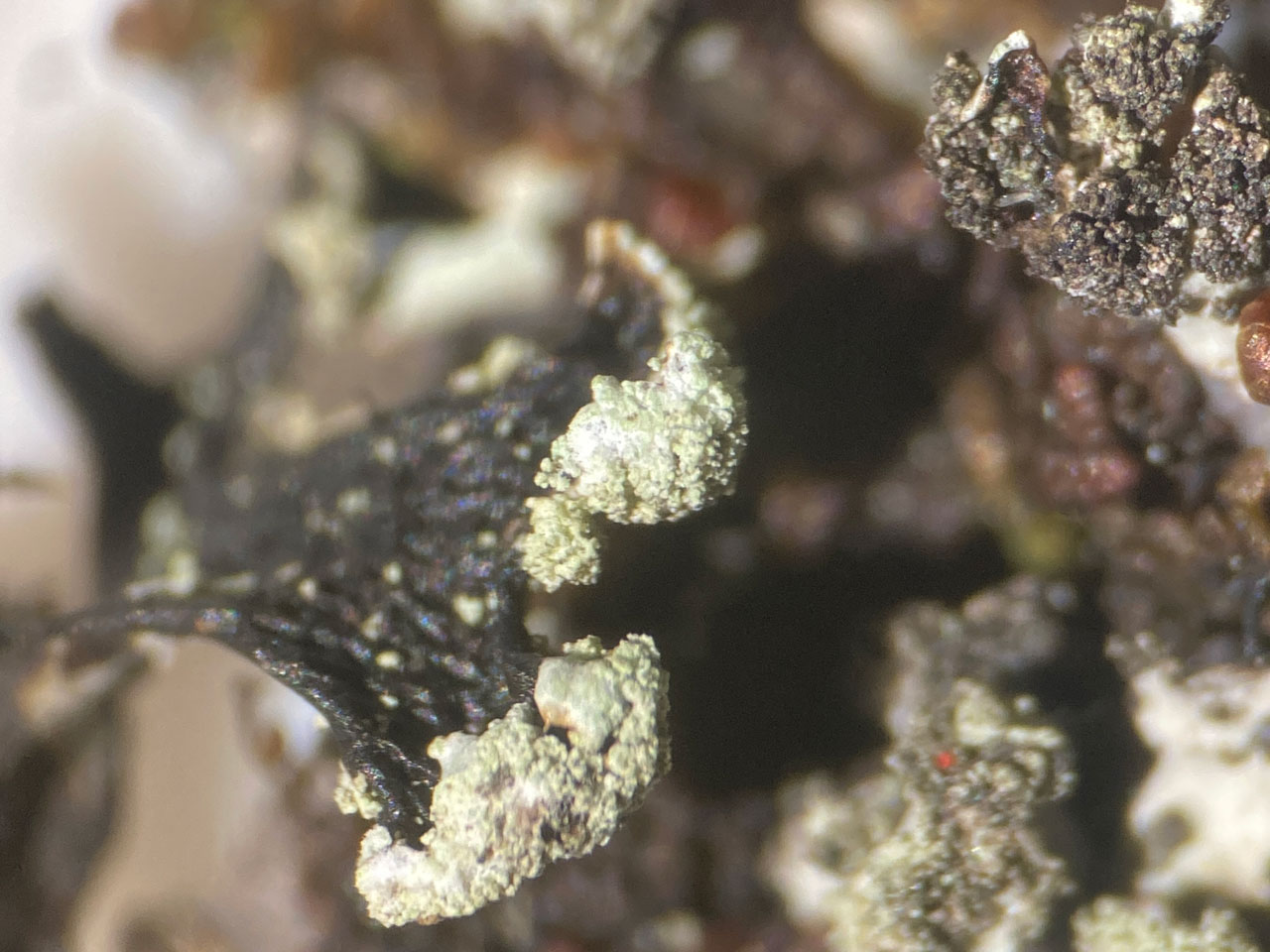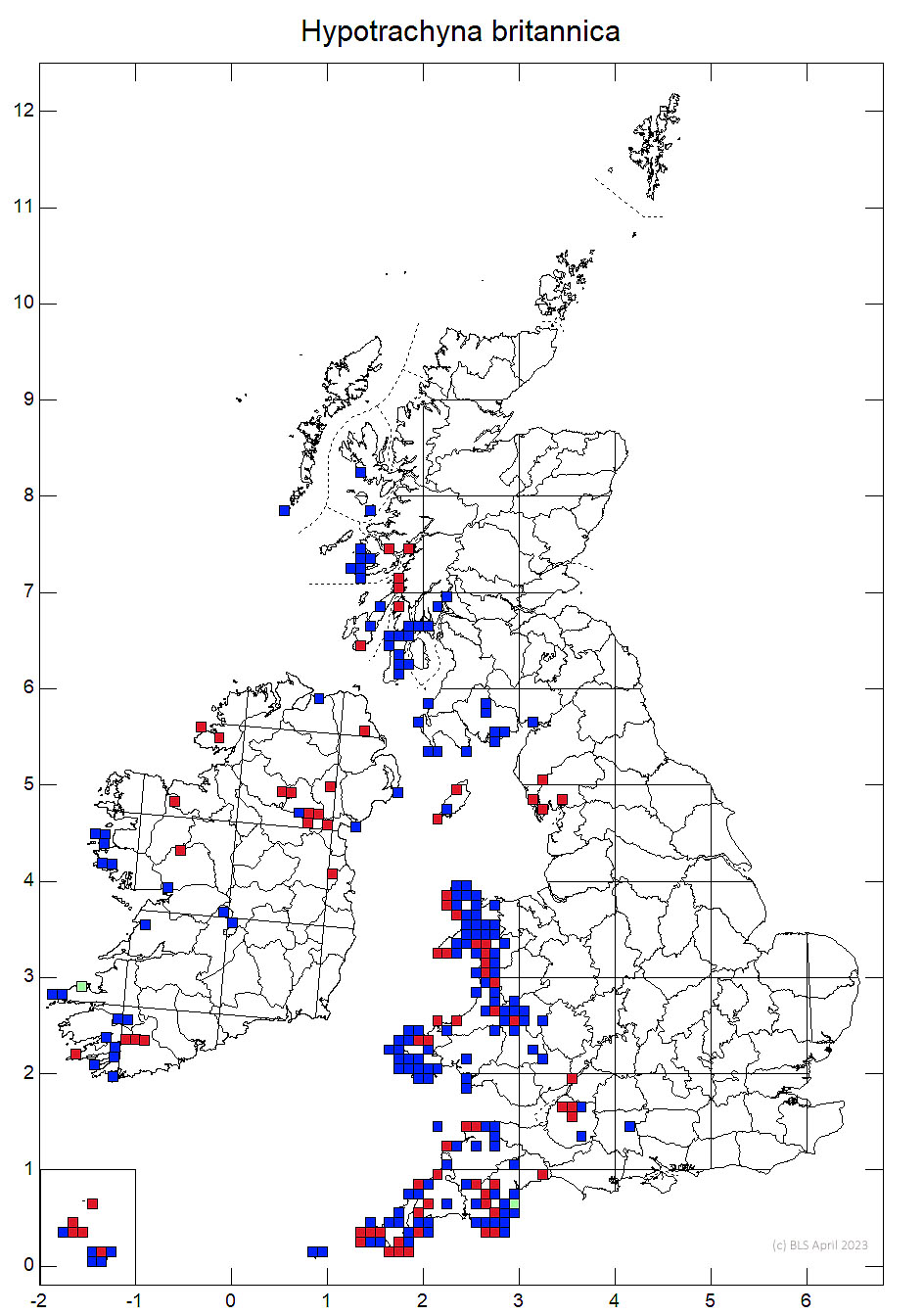A neat Hypotrachyna found locally on siliceous rock in the west. Possibly over recorded in the past under the assumption it could be identified by the dark colour of the soredia but this is not diagnostic. Dark soredia on well-lit specimens are shared by well-illuminated thalli of H. afrorevoluta and H. revoluta. The elegant extended and ascending parallel-sided pustulate lobes are the best character.
Thallus moderately adnate to appressed, (1–) 4–10 cm diam.; lobes becoming crowded and imbricate with age, parallel-sided, subdichotomously to irregularly branched, 1–2.5 (–4) mm broad; margins entire or crenate, sometimes irregularly incised; apices truncate to subrotund, often revolute; upper surface grey to bluish-grey, becoming brownish at the apices, shiny to matt, maculate particularly at the lobe tips, developing cracks with age, pustulate; pustules submarginal and laminal, becoming coarsely sorediate, sometimes coalescing but not extensively; soredia pale greenish grey to blue-black, the colour darker when well-illuminated, ultimately eroding away and
revealing the blackened lower cortex; medulla white; lower surface dark brown to black, with a pale brown margin, rugulose, moderately rhizinate; rhizines unbranched or sparsely to occasionally moderately dichotomously branched, continuing up to the lobe apices or not, rarely projecting beyond lobe margins and appearing cilia-like. Apothecia not seen. Pycnidia rare; conidia not seen. Cortex K+ yellow, medulla C+ red, K–, KC+ red, Pd–, UV- (atranorin, gyrophoric acid [major], lecanoric acid [trace])
Distinguished by the extended, ± ascending parallel-sided pustulate lobes, and by the largely coastal rock habitat. Separated from the similar H. revoluta by the narrow dichotomously branching lobes, and by the presence of pustules more resembling those of H. afrorevoluta that typically develop blue-black eroding soredia when well-lit, but can be much paler. The colour of the soredia is not diagnostic and dark soredia on well-lit specimens are shared by well-illuminated thalli of H. afrorevoluta and H. revoluta.
On siliceous outcrops, boulders, memorials and stone walls in ± sheltered but well-lit sites, usually on or near the coast, rarely on the ground or on old Heather stems and Gorse.

Local, W. Britain, Ireland and the Channel Isles; probably over-recorded in the past because of reliance on the colour of the soralia.
Cannon, P., Divakar, P., Yahr, R., Aptroot, A., Clerc, P., Coppins, B., Fryday, A., Sanderson, N. & Simkin, J. (2023). Lecanorales: Parmeliaceae, including the genera Alectoria, Allantoparmelia, Arctoparmelia, Brodoa, Bryoria, Cetraria, Cetrariella, Cetrelia, Cornicularia, Evernia, Flavocetraria, Flavoparmelia, Hypogymnia, Hypotrachyna, Imshaugia, Melanelia, Melanelixia, Melanohalea, Menegazzia, Montanelia, Nesolechia, Parmelia, Parmelina, Parmeliopsis, Parmotrema, Platismatia, Pleurosticta, Protoparmelia, Pseudephebe, Pseudevernia, Punctelia, Raesaenenia, Tuckermannopsis, Usnea, Vulpicida and Xanthoparmelia. Revisions of British and Irish Lichens 33: 1-98.
Text by N A Sanderson, based on Cannon et al (2023).





